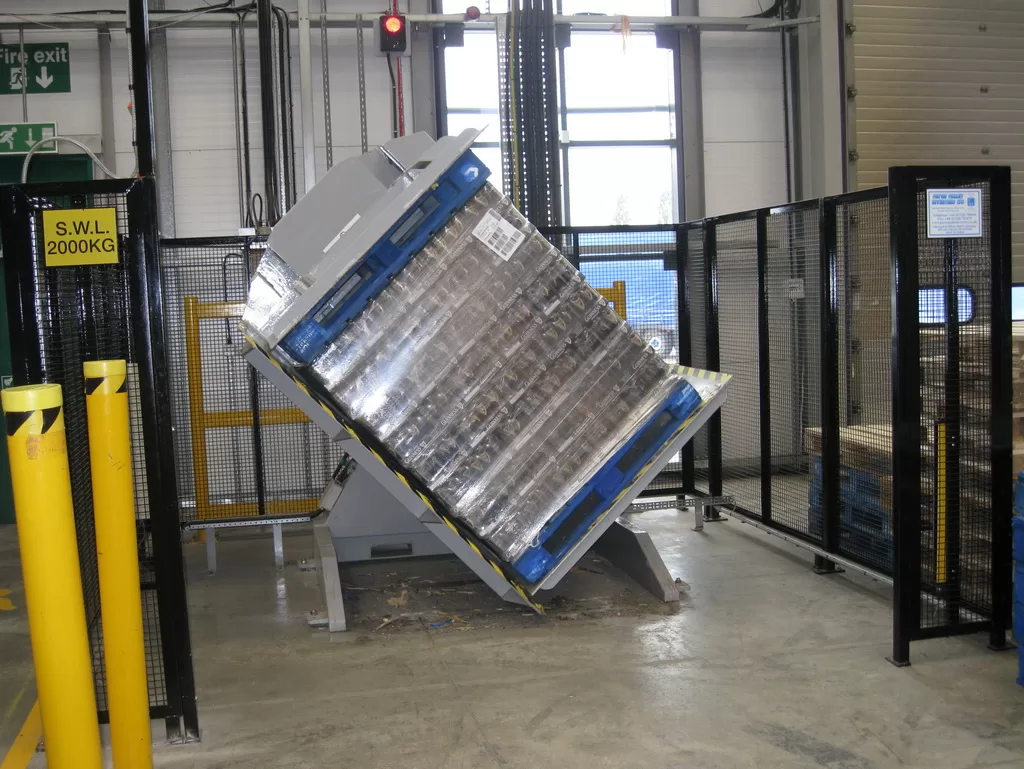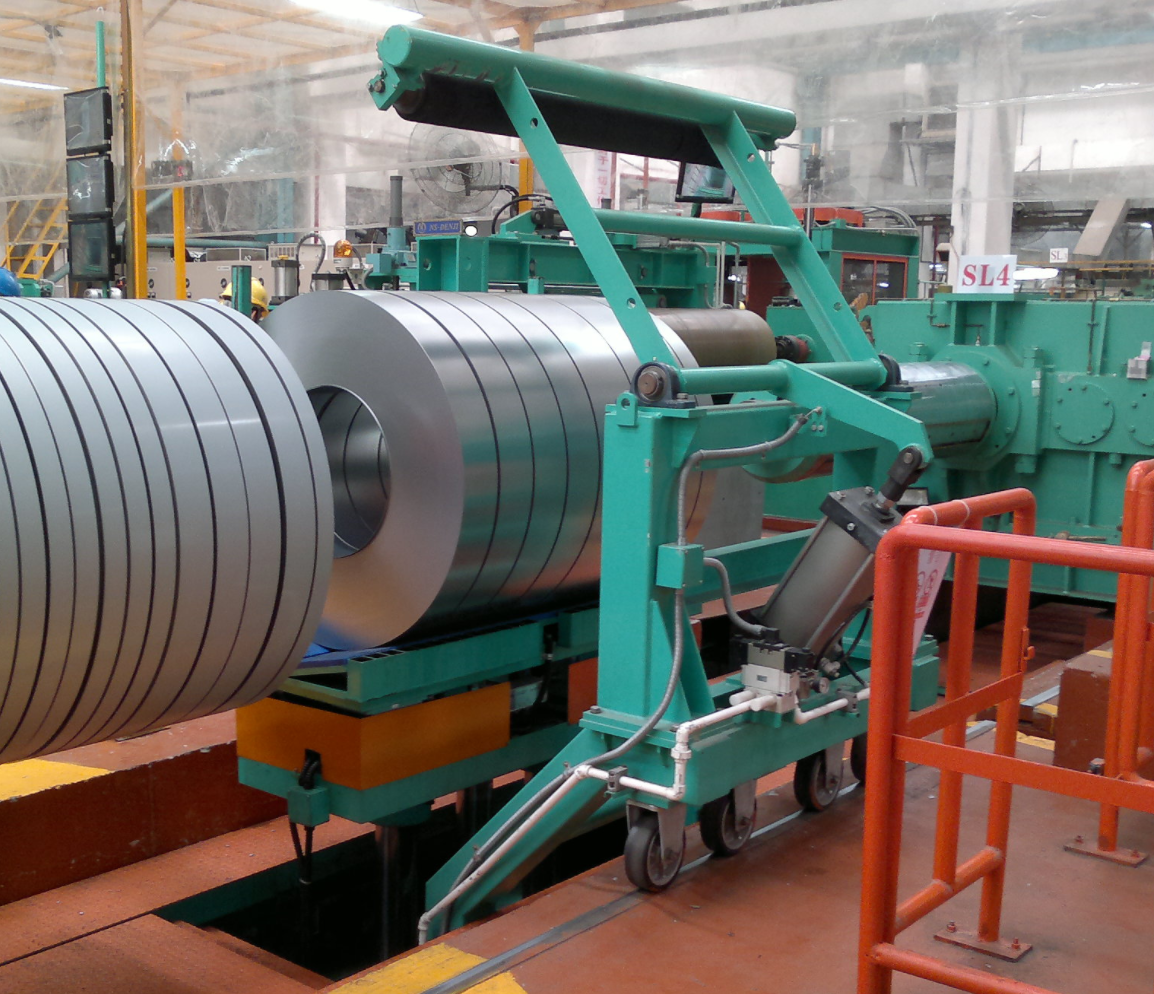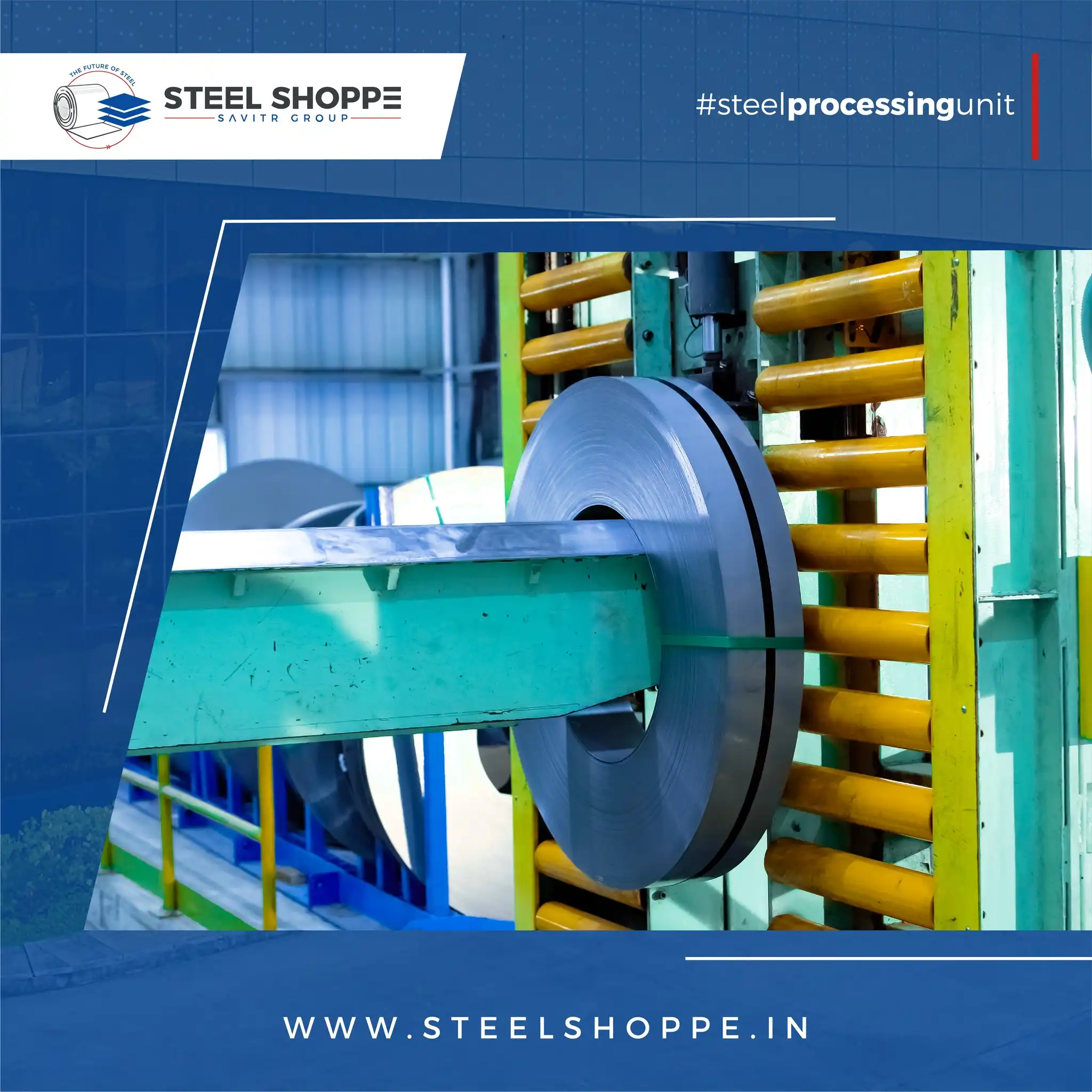What Are the Environmental Benefits of Using Plastic Pipe Bundling Machines?
Plastic pipe bundling machines are revolutionizing the way pipes are packaged, offering a compelling blend of efficiency and sustainability. By automating the bundling process, these machines significantly reduce material waste and energy consumption. The environmental benefits are substantial and contribute to a more sustainable construction industry.
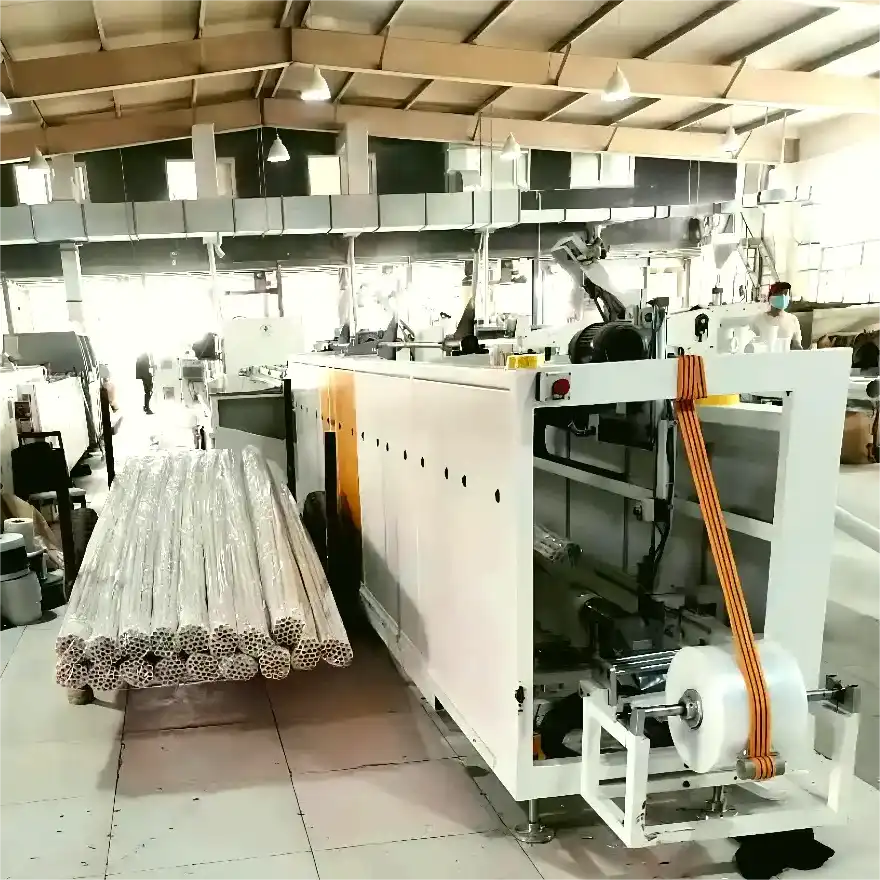
Plastic pipe bundling machines reduce environmental impact by minimizing material waste, optimizing energy use, and ensuring consistent, secure bundles. This leads to less material consumption, reduced energy consumption, and decreased product damage, thereby promoting sustainable packaging and lowering carbon footprint.
Ready to discover the transformative impact of plastic pipe bundling machines on environmental sustainability and operational efficiency? Join us as we explore the ways this technology is forging a greener path for the plastic pipe industry and beyond.
1. Minimizing Waste: The Core Environmental Advantage
Manual pipe bundling, while seemingly straightforward, carries considerable environmental burdens. The inconsistencies and inefficiencies inherent in manual processes lead to wasted materials and increased energy consumption. Automated bundling offers a clear solution by optimizing resource utilization and enhancing sustainability.
Plastic pipe bundling machines minimize material waste by applying precise bundling techniques, optimizing energy consumption through streamlined operations, and reducing product damage during shipping. This comprehensive approach significantly lowers waste generation, promotes environmental benefits, and supports sustainable packaging practices.

The Stark Reality of Manual Bundling vs. Machine Bundling
To truly grasp the impact, it’s crucial to quantify the differences between manual and machine bundling in key environmental areas:
Material Usage: Precision vs. Excess
Manual bundling often results in excessive material use. Workers tend to apply extra wrapping or strapping to ensure stability, leading to substantial waste. In contrast, plastic pipe bundling machines use precise measurements, minimizing material consumption.
Consider a company bundling 10,000 pipe bundles per month:
| Bundling Method | Strapping Material per Bundle | Total Strapping Material per Month |
|---|---|---|
| Manual | 5 kg | 50,000 kg |
| Machine | 3 kg | 30,000 kg |
This represents a 40% reduction in material usage, directly translating to reduced production costs and a lower environmental impact from material manufacturing and disposal.
Energy Efficiency: Streamlining for Sustainability
Manual bundling requires significant human labor, indirectly consuming energy through facility lighting, heating/cooling, and other operational overhead. Automated pipe bundling machines streamline the process, reducing labor needs and overall energy consumption.
A comparison of energy consumption between manual and machine bundling reveals the following:
| Process | Energy Consumption (kWh/month) |
|---|---|
| Manual Bundling | 1500 |
| Machine Bundling | 800 |
This illustrates a substantial energy saving, highlighting the efficiency gains from automated processes.
Waste Reduction: Protecting Products and the Planet
Manual bundling often results in inconsistent and insecure bundles, leading to product damage during shipping and handling. These damaged pipes then become waste, adding to the environmental burden. Plastic pipe bundling machines ensure consistent, secure bundles, minimizing the risk of damage and waste.
Consider the following scenario:
| Bundling Method | Bundles Damaged During Shipping (per 10,000) |
|---|---|
| Manual Bundling | 500 |
| Machine Bundling | 100 |
Reducing product damage translates to fewer discarded pipes, further minimizing the environmental impact.
By combining material optimization, energy efficiency, and waste reduction, plastic pipe bundling machines offer a comprehensive approach to reducing the carbon footprint of pipe packaging.
2. Embracing Sustainable Materials for a Greener Future
The environmental benefits of pipe bundling machines are further amplified when combined with sustainable materials. The choice of materials plays a crucial role in maximizing carbon footprint reduction and promoting a circular economy.
Plastic pipe bundling machines are compatible with a wide range of eco-friendly alternatives, including recycled plastic, biodegradable films, and paper-based materials. This reduces reliance on virgin resources, minimizes waste, and supports a circular economy.
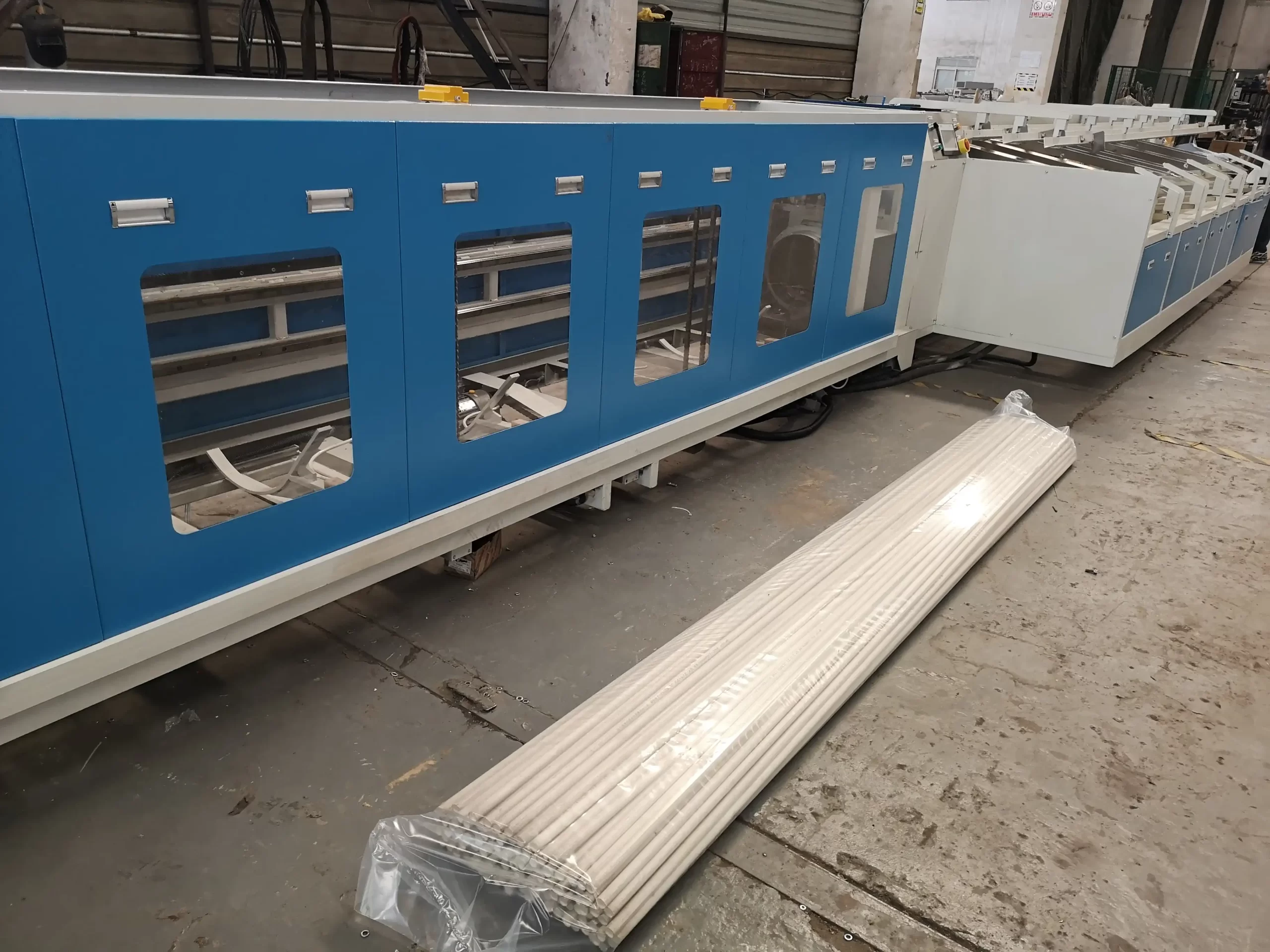
Technical Integration of Sustainable Materials
Integrating sustainable materials into pipe bundling requires careful consideration of technical aspects:
Recycled Plastics: Reducing Virgin Plastic Demand
Recycled plastics like polyethylene (PE) and polypropylene (PP) reduce the demand for virgin plastic production. Pipe bundling machines can be adapted to handle these materials, but adjustments to tension settings and sealing mechanisms may be necessary.
Biodegradable Films: A Compostable Alternative
Biodegradable films, often made from plant-based sources like polylactic acid (PLA), offer a compostable alternative to traditional plastics. These films require specific handling due to their sensitivity to heat and moisture. Pipe bundling machines with precise temperature and humidity controls can ensure proper sealing and bundling.
Paper-Based Materials: A Renewable Option
Paper-based strapping and wrapping provide a renewable and recyclable option. However, paper materials may have lower tensile strength compared to plastic alternatives. Pipe bundling machines with adjustable tension controls and specialized sealing mechanisms can ensure secure bundling without compromising material integrity.
3. Energy Efficiency: Optimizing Machine Operations
Beyond material choices, optimizing the operation of pipe bundling machines can further reduce their carbon footprint. Energy-efficient designs and smart operational practices can significantly lower energy consumption and promote sustainable practices.
Optimizing pipe bundling machine operations involves using energy-efficient components, implementing smart controls, and performing regular maintenance. These strategies reduce energy consumption, minimize downtime, and extend the lifespan of the machines.
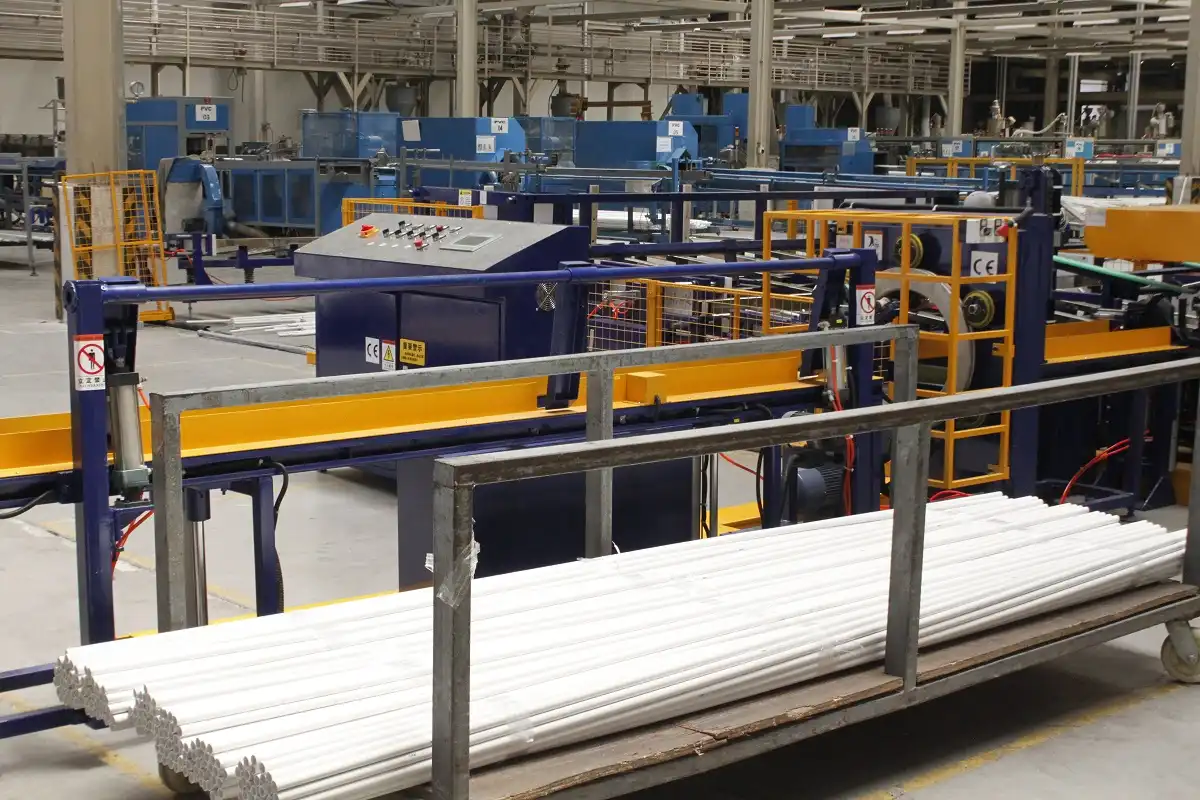
Enhancing Energy Efficiency: Specific Strategies
To improve the energy efficiency of pipe bundling machines, consider these technologies and practices:
Servo Motor Technology
Servo motors offer superior precision and energy efficiency compared to traditional AC motors.
| Motor Type | Energy Consumption (kWh/year) | Precision Level |
|---|---|---|
| AC Motor | 1200 | Medium |
| Servo Motor | 750 | High |
Smart Control Systems
Implement intelligent control systems that optimize bundling parameters based on pipe dimensions and material properties.
| Control System Type | Energy Saved (%) | Material Waste Reduction (%) |
|---|---|---|
| Basic Control | – | – |
| Smart Control | 15 | 10 |
Regular Maintenance Schedules
Preventative maintenance ensures optimal machine performance, reducing energy waste and downtime.
| Maintenance Frequency | Downtime (Hours/Year) | Energy Efficiency (%) |
|---|---|---|
| No Maintenance | 40 | 80 |
| Regular Maintenance | 10 | 95 |
These strategies enhance energy efficiency and contribute to a more sustainable operation.
4. Life Cycle Assessment: A Comprehensive Approach
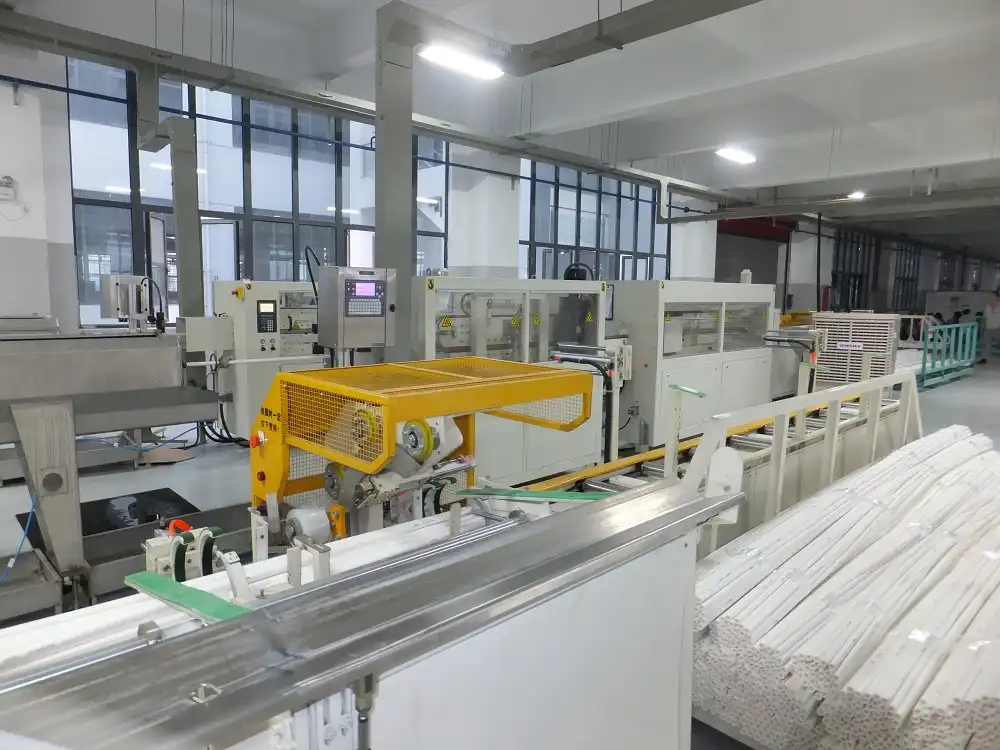
To gain a complete understanding of the environmental benefits, a comprehensive life cycle assessment (LCA) is essential. This involves evaluating environmental impacts across all stages, from manufacturing to disposal.
A life cycle assessment identifies opportunities for improvement and environmental hotspots. By quantifying impacts, manufacturers can make informed decisions and optimize the sustainability of their pipe bundling operations, leading to holistic carbon footprint reduction.
A life cycle assessment involves:
- Material Sourcing: Evaluating the environmental impact of raw material extraction and processing.
- Manufacturing: Assessing energy consumption and emissions associated with machine production.
- Transportation: Quantifying the carbon footprint of transporting the machine and bundling materials.
- Operation: Measuring energy consumption and material usage during machine operation.
- End-of-Life: Evaluating the environmental impact of machine disposal and recycling.
By analyzing these factors, manufacturers can identify areas where they can further reduce their environmental impact and improve the overall sustainability of their pipe bundling operations.
Conclusion
Plastic pipe bundling machines are a valuable asset for decreasing the carbon footprint of pipe packaging. By improving energy efficiency, optimizing material use, and using sustainable materials, these machines help achieve a more sustainable future. Embracing this technology demonstrates environmental concern and yields considerable savings in operations and costs. Switching to pipe bundling machines is beneficial for both businesses and the environment.


